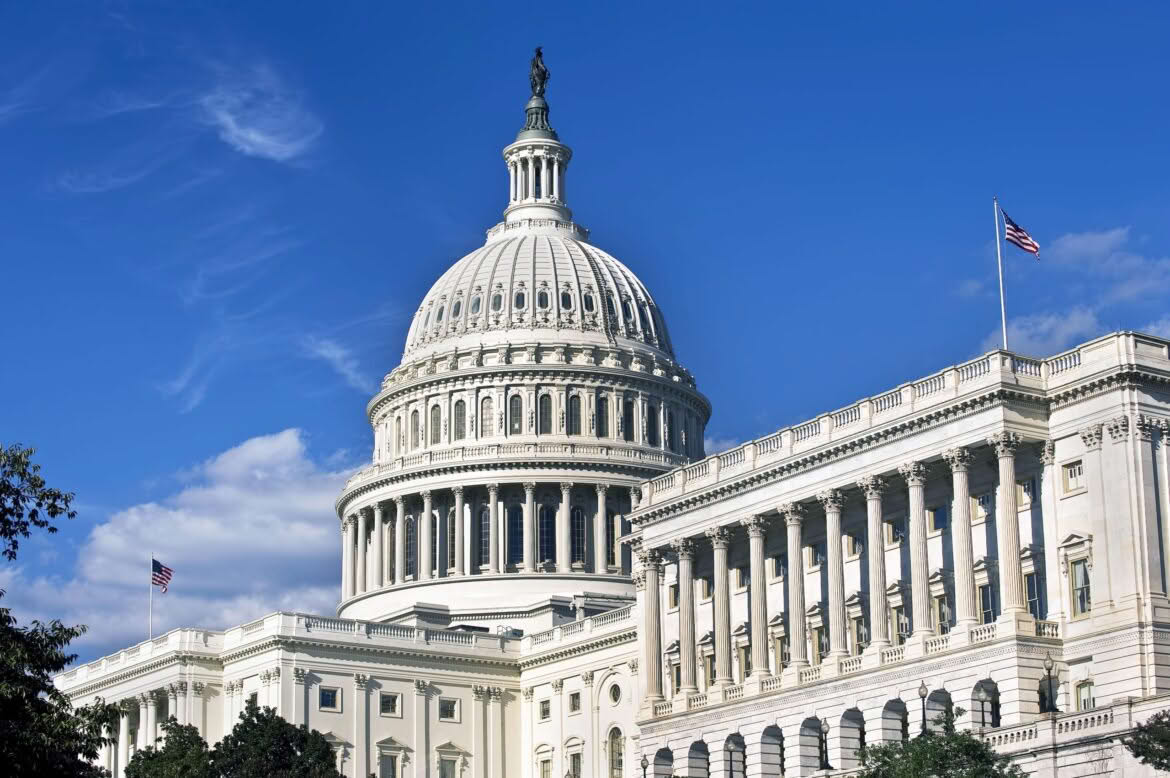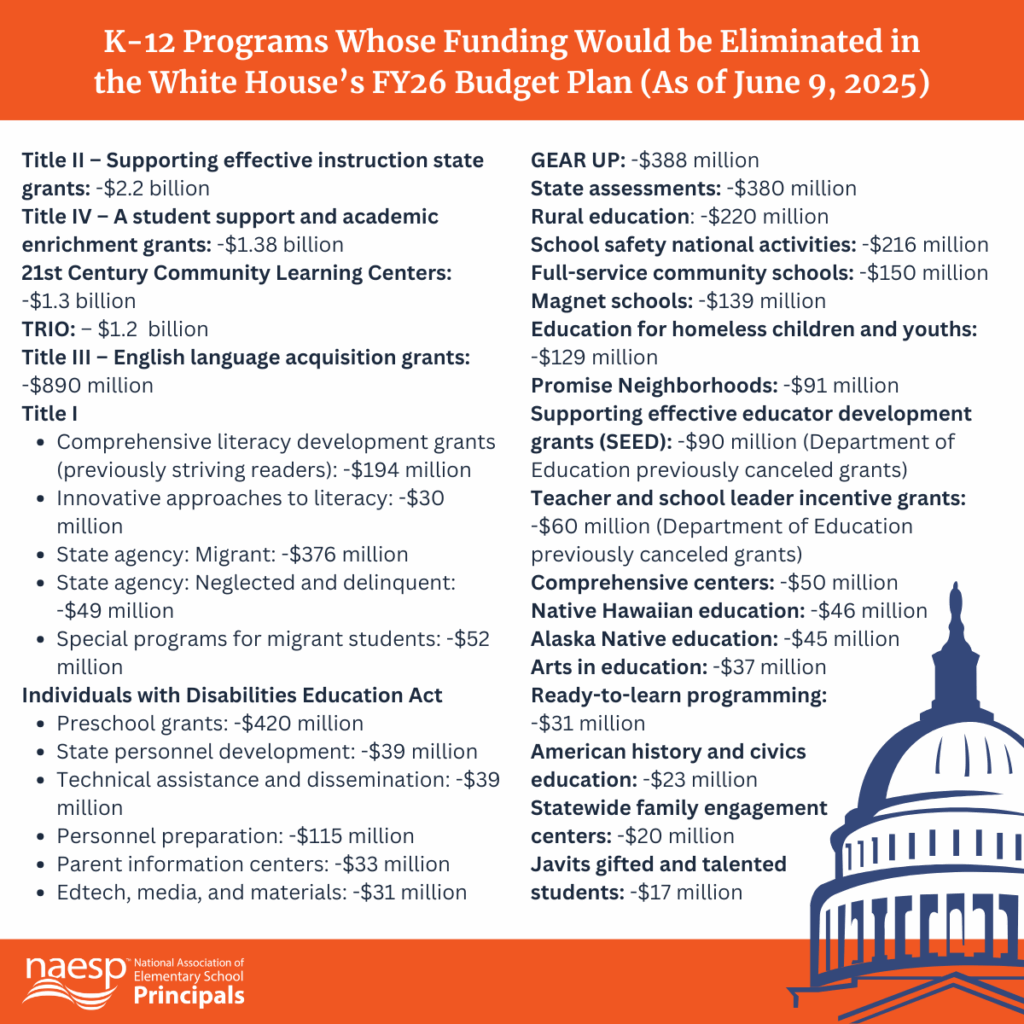Trump’s Budget Proposal: A Blueprint for Dismantling K-12 Programs
In the Trump administration’s FY26 budget proposal, more K-12 education programs are on the chopping block than previously expected.

The Trump administration has released more details about its fiscal year 2026 (FY26) education budget proposal. It confirms educators’ fears about widespread cuts and program eliminations across K-12 education and well beyond the previously announced plans to eliminate Title III English language acquisition grants (-$890 million), TRIO (-$1.1 billion), and GEAR UP (-$388 million).
While the administration plans to maintain baseline funding for Title I and the Individuals with Disabilities Education Act (IDEA) at current amounts, the budget plan calls for eliminating dozens of K-12 programs, including major funding for professional development (Title II), student academic enrichment (Title IV), and after-school activities (21st Century Community Learning Centers).
Here’s a quick rundown of the key new details in the president’s FY26 budget request for K-12 education.
Title I
On the surface, the proposal appears to maintain Title I funding at $18.4 billion, the same level Congress provided last fiscal year for grants to local school districts. But that headline number conceals significant overall cuts to the program. The budget would eliminate about $700 million in funding from these Title I subprograms:
- Comprehensive Literacy Development Grants: –$194 million
- Innovative Approaches to Literacy: –$30 million
- Education for Migrant Students: –$428 million
- Support for Neglected and Delinquent Students: –$49 million
IDEA
The administration takes a different approach with special education funding. Six IDEA subprograms would be eliminated but their funding would be redirected to the main IDEA Part B grant program that supports students with disabilities in states and districts. The Infants and Families program would also remain and be funded at its current level ($540 million). The net result would mean a slight increase in IDEA funding to local school districts (+$677 million) but the end of targeted program support in these special education areas:
- Preschool grants: -$420 million
- State personnel development: -$39 million
- Technical assistance and dissemination: -$39 million
- Personnel preparation: -$115 million
- Parent information centers: -$33 million
- Educational technology, media, and materials: -$31 million
Title II – PD for School Leaders and Educators
As expected, Trump’s budget plan again seeks to eliminate the Title II program and its $2.2 billion for professional development, just like was attempted in his first term. Title II is the largest source of federal funding solely dedicated to supporting school leaders and educators. In fact, the FY26 budget proposal would eliminate funding for every program that supports school leaders and educators.
Title III – English Language Acquisition Grants
As previously noted, the budget would eliminate the $890 million English Language Acquisition grant program.
Title IV – Student Support and Academic Enrichment Grants
This $1.4 billion program that supports a well-rounded education, safe and healthy students, and the effective use of technology would also be eliminated.
21st Century Community Learning Centers
The budget would eliminate funding for this program that supports extended learning opportunities for students before school, after school, and during the summer. One of the largest K-12 programs, it would amount to a $1.3 billion loss.
Charter Schools
The only K-12 program that gets a funding increase in the FY26 budget is charter schools, which would get an additional $60 million.
New K-12 Block Grant
As part of Secretary of Education Linda McMahon’s goal to shift authority and decision-making to the states, the budget plan calls for the creation of a new $2 billion block grant for K-12 schools that is a fraction of the billions more being eliminated from other formula grant programs.
Other Notable Programs
It’s worth highlighting the complete loss of funding for Rural Schools (-$220 million), Promise Neighborhoods (-$91 million), and Full-Service Community Schools (-$150 million).

Congress Needs to Hear From You
The president’s budget is the opening bid in the arduous appropriations process. Senate and House leaders will have their own appropriations priorities. It is imperative that members of Congress hear from school leaders about the benefits of these programs in their schools and for their students and the negative consequences that would come from cutting or eliminating funding for these programs. You can quickly and easily contact your representative and two senators with that message using our advocacy tool.
David Griffith is associate executive director, Policy and Advocacy, at NAESP.




